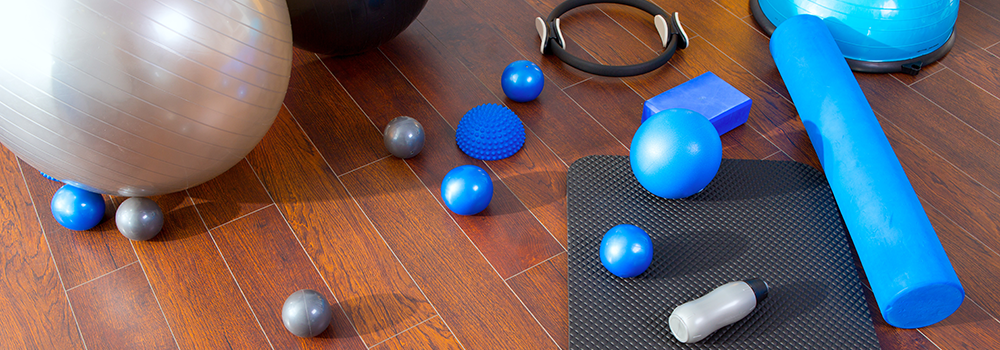Pilates is a form of exercise that has gained notoriety in the recent years. In the developed world, Pilates has been embraced by people from all walks of life. Celebrities have enrolled in the exercise regime and many have been photographed heading to or from a Pilate’s class. This may be a factor that has driven the popularity of Pilates exercise regime.
Origin of Pilates
As an exercise, Pilates incorporates aspects of yoga and martial arts. Pilates traces its roots to the early 19th century. It was invented by Joseph Pilates, a German culturist. He believed that mental and physical health was interconnected. If the mental health of a person was intact, this would positively impact the physical health. The term contrology was coined to describe the mind body connection during the exercises. It is on this principle that Joseph Pilate designed the exercise programme.
The Pilates routine aims at building strength and flexibility in the muscles of the abdomen, pelvis, hips and legs. To attain this, the inventor came up with core principles that were to be followed for a person to benefit from a Pilates routine.
Focus is the key to perform
Unlike many exercise programmes, Pilates makes a mental demand on an individual. In the course of the exercise, a person’s mind must be on the routine fully. Focus ensures that the movements are smooth and well coordinated. Through focus, control of the muscles is achieved. Involvement o the mind ensures that a person reaps maximally from the exercise routine. In Pilates, the quality of the exercises takes precedence over the quantity done.
Control: another key principle.
Pilate’s exercises are highly specific and structured. A person has to be in full control of their body and muscles during the routine. All the required muscles have to work in harmony to help lift the body against gravity.
It is difficult to achieve control of the body muscles without having a primary center of control. The principle of centering offers a solution for this. The center acts as the focal point for any Pilate’s routine. It is the place where the muscle movements and control begin. From the center, muscles that are not part of the center are then recruited systematically into the routine. The center is formed by muscles of the abdomen, the lower back, the buttocks and the thighs. In the Pilates circles, the center is also referred to as the powerhouse.
Smooth transition: an important aspect of the routine
Like most exercise programs, Pilates encompasses use of different exercises. For muscle strength to be achieved, the transition from one exercise routine to another must be done effortlessly and accurately. The transition must flow smoothly. This ensures fluidity during exercise and is referred to as the principle of flow or efficiency of movement.
Accuracy is the key for maximum benefit
If a person is not keen to detail, Pilates may be a poor choice for an exercise programme. Pilates is not about performing the routine. It is performing the routine with precision to the letter. It can be likened to military precision. Maximum benefits will be achieved when exercise is performed accurately. A person is better off doing one exercise accurately that performing multiple wrongly executed routines. Keen attention to the instructor is mandatory in Pilates. It is also important to ensure that one is under the guidance of a qualified instructor.
Breathing: an important aspect of Pilates
Breathing adequately enhances the value that a person gets from Pilates. Inspiration delivers oxygen to the body tissues. Forceful inspiration delivers more oxygen to the body tissues. To borrow his words, Joseph Pilates viewed deep breathing as both invigorating and cleansing (the principle of breathing). He advised his students to exhale maximally so as to increase the room available for air during inspiration. A practitioner is advised to breath deep and into the sides of the ribcage.
Pilates improves body posture
The power house groups of muscles are tasked with maintenance of posture in the body. Through Pilates these muscles are strengthened and their endurance is increased. This results in the practitioner being able to maintain a healthy posture. A healthy posture helps ward off low back pain that result from poor posture. Pilates has also been found to alleviate pain in people who suffer from low back pain.
Pilates can be practiced at any age
Age does not bar a person from practicing Pilates. It is a safe exercise regime. Full involvement of the mind reduces the margin for error. People as old as 80 years of age can practice Pilates safely. An instructor is mandated to tailor the exercise routine so that it is relevant to the practitioner with respect to their age.
Valuable exercise for physically unfit individuals
Pilates is a gentle and low impact type of exercise. It is therefore not very effective as a weight loss exercise regime. However, it is beneficial in helping maintain the weight loss. It also helps an individual who has lost weight achieve a more shapely body. Due to the nature of it slow intensity, Pilates is a viable option for physically unfit people. As the body adapts to exercise, the routine can then be advanced. It is also safe for people who are recovering from physical injury. Modern Pilates incorporates aspects of physiotherapy that are essential in rehabilitation.

